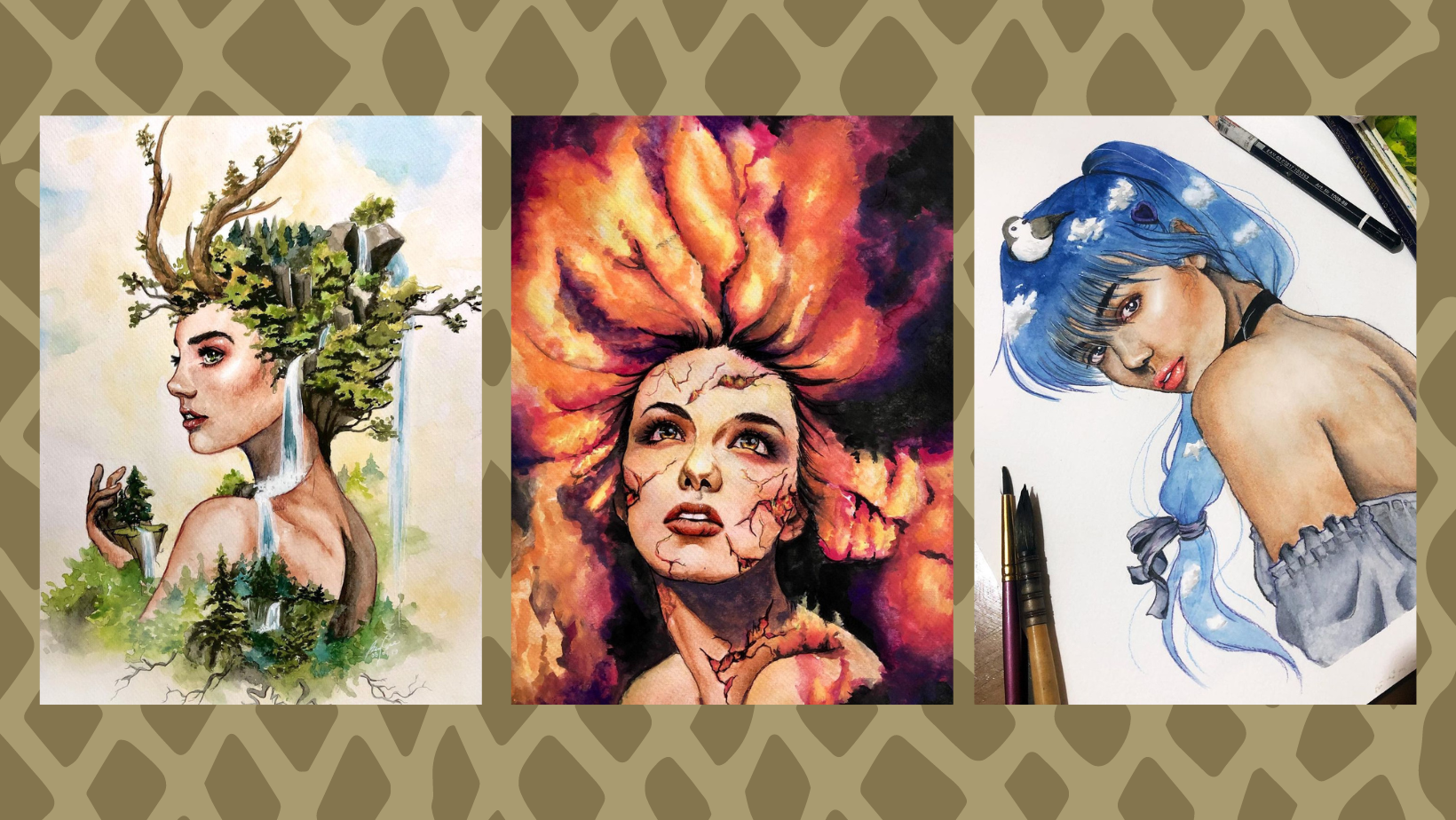Pricing an artwork is a bit of a balancing act. You don’t want to charge too much or too little. So, whether you’re an emerging artist or you’ve been in the art market for a while, we’ve put together 5 tips for how to price your artworks for sale and asked our friends, wildlife artist Dawie Mocke and artist and designer, Nardurna for their advice too.

1. Find a baseline
First things first, look at similar artists to determine a baseline. Look at their style, medium, size, experience and where they’re selling their works from. If you can find an artist whose work is similar to yours, you can use their pricing as a rough idea for a baseline. Starting with a rough estimate for your work is a good way to know what you can charge without overcharging or undercutting yourself.

2. Consider your own materials and time
Once you’ve got a baseline in your mind, you can look at your own works. Do you use expensive varnish, oil paints or a premium canvas in your work? If so, consider charging a little more because it costs more to make.
Is your work framed or do you live remotely or rurally where shipping is more expensive? Don’t forget to factor these costs into your work too.
If you’ve spent a long time creating the work, then don’t sell yourself short either. You could increase the price slightly if you spent more time creating the work. Customers will expect to pay more for realistic work because of the intricate details, so think about this in your pricing.

3. See what’s selling
Take a look at what’s selling and notice the subject matter, is a particular object doing better than another? Wildlife artist, Dawie Mocke says considering what the art market wants can also help choose your subject matter.
“If you’re looking to sell your work, it’s also helpful to know what the market wants. That first step was easy for me because I found my niche in wildlife and started specialising in it,” he said.
“However, later I found that not all animals are popular, so try sticking to themes or animals that could potentially bring in an income -- unless it's a commissioned work. You'll spend the same amount of time painting a lion versus a caterpillar, but you'll have 100 times more potential buyers for the lion than the caterpillar. So carefully choose your subject because time is money.”

4. Location, location, location
Where are you looking to sell your works? If you have a studio or gallery, it makes sense to keep your prices consistent so customers can expect the same value. However, if you’re looking to sell online or at the local markets, keep in mind that customers might expect a bit of “wiggle room” with pricing. If you have older works or you’re struggling to get things moving, consider promotions or using outlets like social media or local markets as ways to sell older works, knowing people might expect a bit of a bargain.
Not sure how to photograph your artworks? Check out our handy how-to here.

5. Don’t underestimate yourself, these things can take time
It's hard to juggle what we think our art is worth and what we think we should charge, especially if we’re new to the game or reviewing our prices later in our career. Remember that sales can take time so don’t be upset if your work doesn’t bear fruit immediately.
Artist and designer, Nardurna says it’s important to not undervalue yourself.
“When I started, I was so cautious with pricing and often lowballed myself. As I have understood the market a bit more, I have gained more confidence and I have since upped my prices for my work,” she says.
“I would say to any artist that produces unique work that the days of the struggling artist are well and truly over! If you are prepared to put in the work and diversify your art and across all social channels, then there is no reason you can’t be a successful six-figure earning artist. We are in the best time in existence to be creators, we have all the tools to reach millions of people, it just requires time.”

We hope these tips help you when pricing your artworks and that you feel ready to take on the world! Looking for more? You can read Dawie Mocke’s tips for painting realistic animals or read more about Nardurna’s story and pick up some words of wisdom.




























